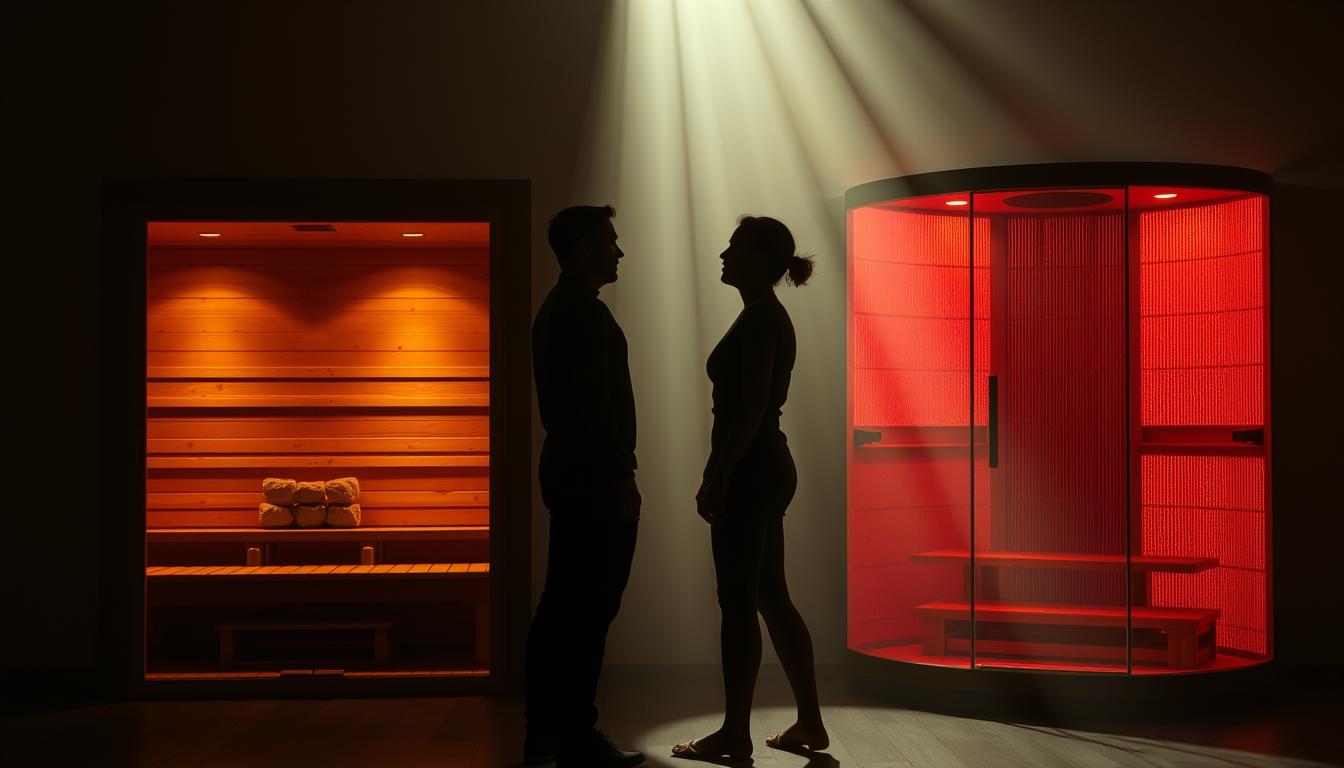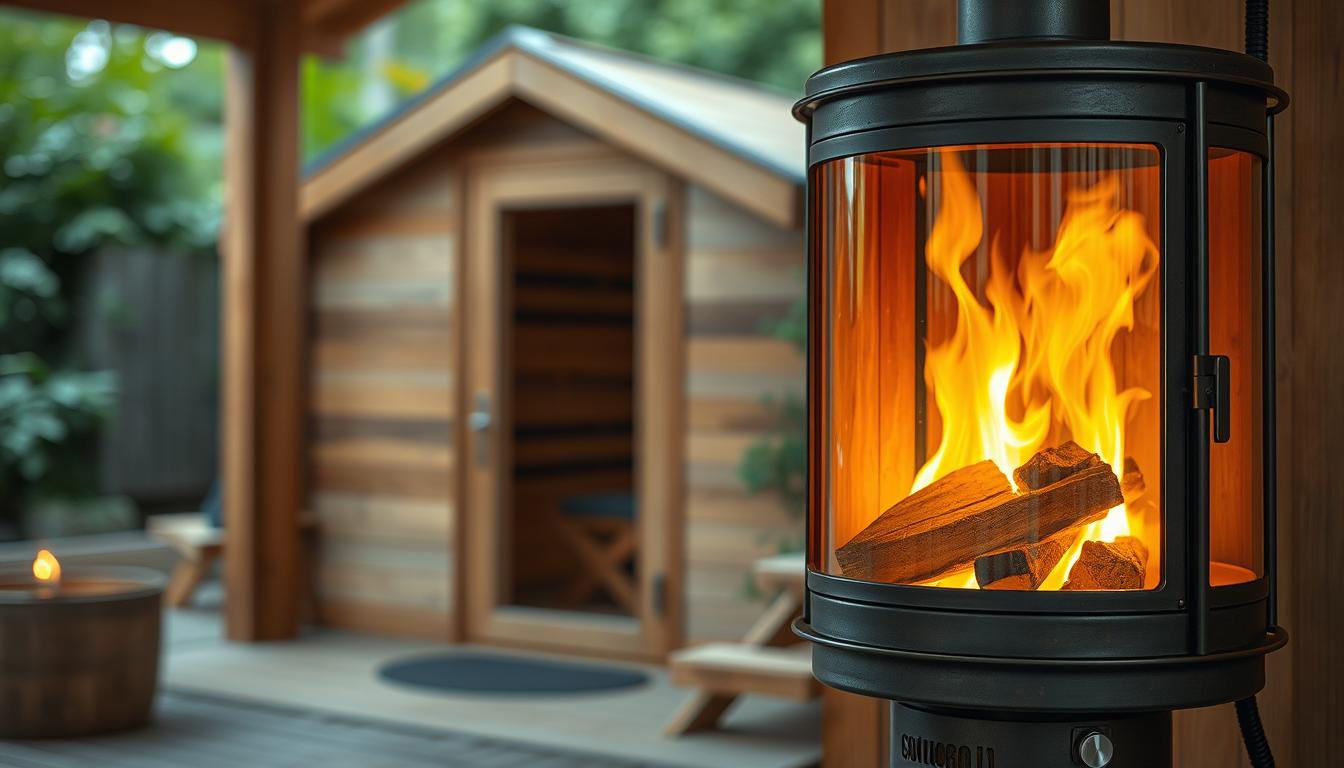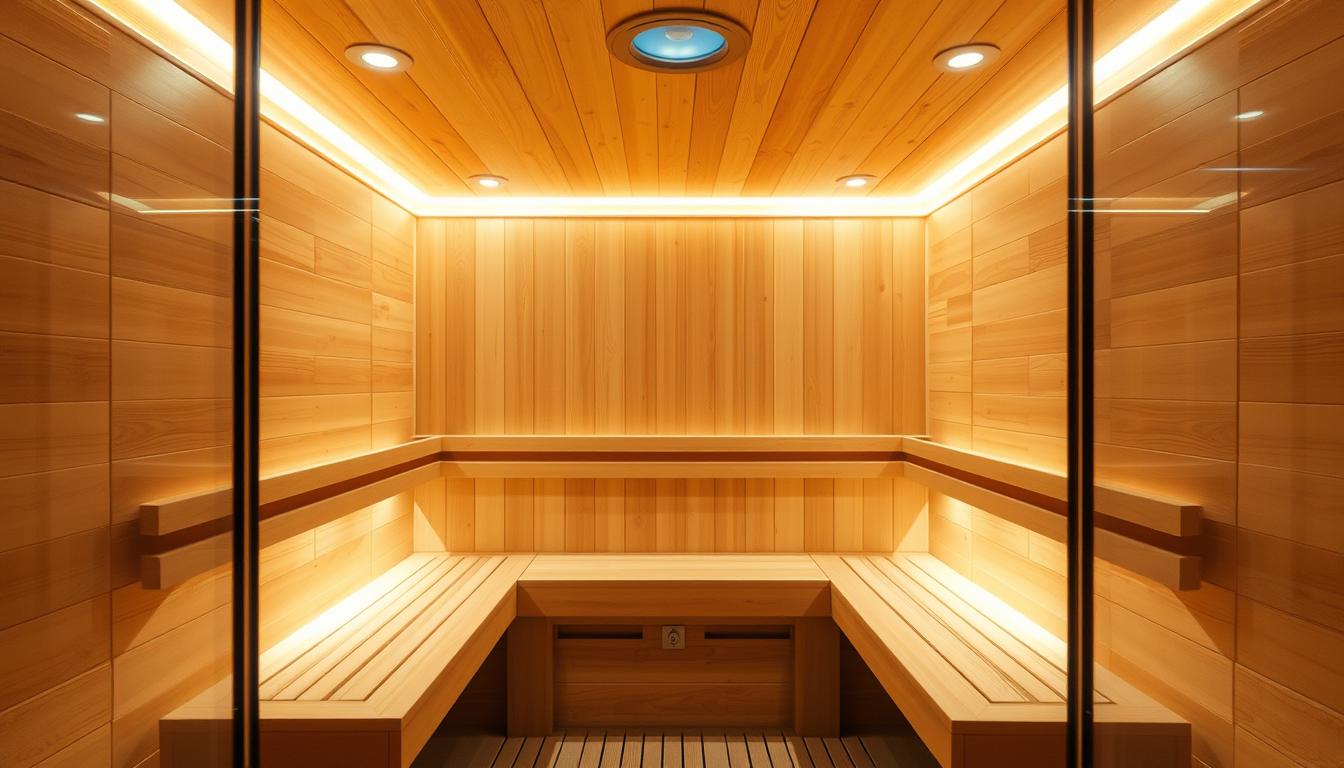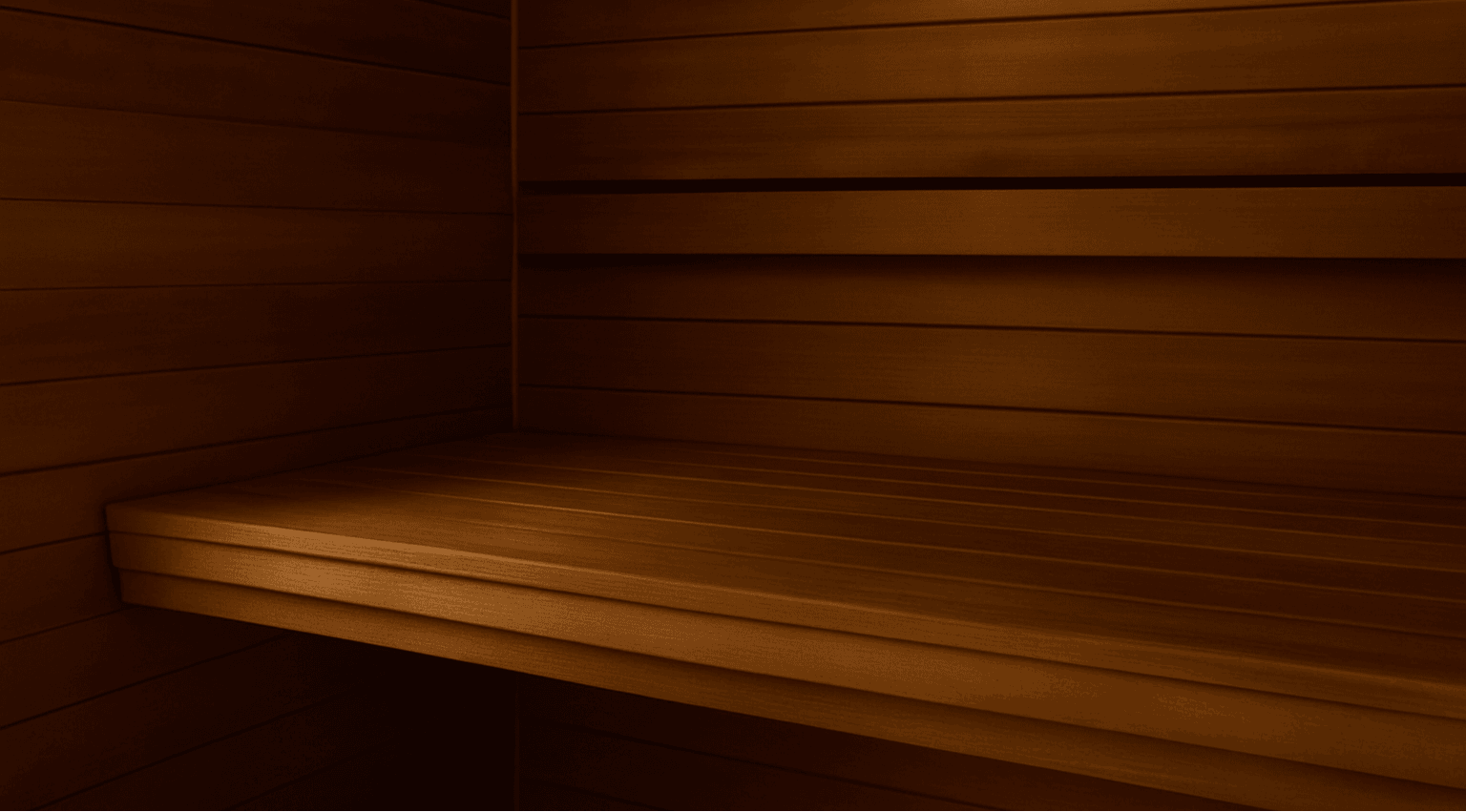
Comparing Infrared vs Traditional Sauna for Health
Saunas have become a popular wellness tool, with Yelp reporting a 40% increase in usage in 2024. These relaxing spaces are not just for unwinding—they offer significant health benefits. Studies show that 4-7 weekly sessions can reduce cardiovascular mortality risk by up to 50% and lower dementia risk by 20-60%.

This article provides an evidence-based comparison of different heating methods, their health outcomes, and which option might suit you best. Whether you’re seeking relief from chronic pain, detoxification, or mental health support, saunas can be a powerful therapy tool.
We’ll explore key factors like temperature ranges, energy efficiency, and installation requirements to help you make an informed decision. Let’s dive into the details to find the best fit for your wellness journey.
Key Takeaways
- Sauna usage has surged by 40% in 2024, according to Yelp.
- Regular sessions can reduce cardiovascular mortality risk by up to 50%.
- Dementia risk may decrease by 20-60% with consistent use.
- Saunas are effective for chronic pain, detoxification, and mental health.
- Temperature ranges and energy use vary between heating methods.
Introduction to Infrared and Traditional Saunas
The practice of using heat for health dates back to ancient cultures, with Finnish traditions leading the way. These early forms of wellness have evolved into two main types: traditional and infrared systems. Each offers unique benefits and operates differently, catering to diverse preferences and needs.
Traditional saunas, rooted in Finnish culture, use either wet or dry methods to generate heat. Wet saunas rely on steam, while dry versions heat rocks to warm the air. These systems typically operate at higher temperatures, ranging from 176°F to 212°F, and take 30-60 minutes to reach optimal warmth.
https://www.youtube.com/watch?v=33eUIRHOt-w
In contrast, infrared systems use light wave technology to directly warm the body. This modern innovation, pioneered by brands like Tylö, operates at lower temperatures—between 113°F and 131°F. Heat-up times are significantly shorter, often taking just 10-15 minutes.
The key difference lies in how heat is delivered. Traditional methods warm the ambient air, while infrared systems penetrate the body directly. This distinction makes infrared options more energy-efficient and accessible for home use.
Market trends show a growing preference for both types. Home installations are on the rise, while commercial spas continue to adopt advanced systems. Whether you prefer the classic steam of traditional saunas or the targeted warmth of infrared systems, there’s an option to suit your wellness goals.
| Feature | Traditional Saunas | Infrared Saunas |
|---|---|---|
| Temperature Range | 176°F - 212°F | 113°F - 131°F |
| Heat-Up Time | 30-60 minutes | 10-15 minutes |
| Heat Delivery | Ambient Air | Direct Body Penetration |
Both types of saunas offer unique advantages, making them valuable tools for heat therapy. Understanding their differences can help you choose the best option for your wellness journey.
How Infrared and Traditional Saunas Work
Understanding how different heating methods work can help you choose the best wellness tool. Both systems use heat to promote relaxation and health, but their mechanisms differ significantly. Let’s explore how each type operates and what makes them unique.
Traditional Saunas: Heating the Air
Traditional systems rely on heating the air around you. They use either steam or heated rocks to create a warm environment. Temperatures often range from 176°F to 212°F, making these systems ideal for those who enjoy intense heat.
The process involves warming the air first, which then transfers heat to your body. This method has been used for centuries and is deeply rooted in Finnish culture. While effective, it requires more energy and time to reach optimal temperatures.
Infrared Saunas: Direct Body Heating
Infrared systems use light waves to heat body tissues directly. Far-infrared wavelengths penetrate up to 1.5 inches into your skin, warming your core without overheating the air. This method operates at lower temperatures, typically between 120°F and 140°F.
These systems are more energy-efficient, using 60% less power than traditional models. They also warm up faster, often in just 10-15 minutes. The photothermal effect enhances cellular activity, making them a popular choice for modern wellness enthusiasts.

| Feature | Traditional Saunas | Infrared Saunas |
|---|---|---|
| Heat Delivery | Air Heating | Direct Body Penetration |
| Temperature Range | 176°F - 212°F | 120°F - 140°F |
| Energy Use | Higher | 60% Less |
Both systems offer unique benefits, but understanding their mechanisms can help you decide which aligns with your wellness goals. Whether you prefer the classic warmth of traditional systems or the targeted heat of infrared technology, there’s an option for everyone.
Health Benefits of Infrared vs Traditional Sauna
Heat therapy has gained recognition for its ability to improve both physical and mental well-being. Whether you’re looking to enhance cardiovascular health, detoxify your body, or find relaxation, these systems offer a range of benefits backed by modern research.

Cardiovascular Health
Regular use of heat therapy can significantly improve heart health. Studies show that it helps lower blood pressure and improves circulation. The heat encourages blood vessels to dilate, reducing strain on the cardiovascular system.
This effect can lead to a reduced risk of heart disease. For those with existing conditions, heat therapy can be a valuable addition to their wellness routine.
Detoxification and Skin Health
Heat therapy promotes sweating, which helps the body eliminate toxins. This natural detoxification process can improve skin health by unclogging pores and reducing acne.
Additionally, the increased blood flow nourishes skin cells, giving you a healthier, more radiant complexion. It’s a simple yet effective way to support your body’s natural detox systems.
Mental Health and Relaxation
Heat therapy is known for its calming effects on the mind. Research indicates a 62% reduction in anxiety scores among regular users. The warmth triggers the release of endorphins, promoting feelings of relaxation and well-being.
It also helps regulate stress hormones like cortisol, improving sleep quality. For those dealing with stress or PTSD, heat therapy can be a powerful therapy tool.
- Reduces cortisol levels for better stress management.
- Enhances GABA activity, promoting calmness.
- Improves sleep quality, with benefits lasting up to two nights.
By incorporating heat therapy into your routine, you can achieve a healthier body and a more balanced mental state.
Temperature and Comfort Levels
Choosing the right heat therapy involves understanding how temperature and comfort levels affect your experience. Traditional systems operate at higher ranges, typically between 176°F and 212°F. In contrast, modern systems use lower temperature settings, usually between 113°F and 131°F. This difference plays a key role in user preference and safety.
For many, the lower temperature of modern systems is more comfortable, especially for those with respiratory conditions. Studies show that 68% of users prefer these systems for better breathing ease. The direct heating method also ensures that your body warms efficiently without overheating the surrounding air.

Humidity also impacts how heat is perceived. Traditional systems often include steam, which can make the air feel hotter. Modern systems, however, maintain a dry environment, allowing for a more controlled and comfortable experience. This makes them ideal for individuals with conditions like asthma or COPD.
Safety is another critical factor. Different age groups have varying thermal tolerance thresholds. For example, pediatric and geriatric users may find lower temperature systems safer and more manageable. Testimonials from users with respiratory issues highlight the benefits of these systems for daily use.
- Core temperature increases: 1.5°C in modern systems vs. 2.5°C in traditional systems.
- Humidity levels significantly affect perceived heat.
- Modern systems are safer for pediatric and geriatric users.
- Positive feedback from COPD and asthma users emphasizes improved comfort.
By understanding these factors, you can choose a system that aligns with your needs and ensures a safe, enjoyable experience. Whether you prioritize intense heat or a gentler approach, there’s an option for everyone.
Energy Efficiency and Heating Time
Energy efficiency and heating time are critical factors when choosing a wellness system. Modern systems offer significant advantages in both areas, making them a popular choice for home use. Understanding these factors can help you optimize your wellness routine while keeping costs low.
Modern systems use just 1.6kW of energy on average, compared to 6kW for older models. This reduction in energy consumption translates to lower monthly costs—$23 versus $89. For home users, this efficiency is a major selling point.

Heat-up time is another key consideration. Modern systems warm up in just 10-15 minutes, 75% faster than traditional models. This speed makes them more convenient for daily use, especially in busy households.
Insulation requirements also play a role in energy efficiency. Well-insulated systems maintain heat better, reducing the need for sustained energy draw. Smart heating automation further enhances efficiency by adjusting temperatures based on usage patterns.
ENERGY STAR certification is a reliable indicator of energy efficiency. Systems with this certification meet strict criteria for performance and sustainability. Choosing a certified model ensures you’re investing in a high-quality, eco-friendly option.
| Feature | Modern Systems | Older Models |
|---|---|---|
| Energy Use | 1.6kW | 6kW |
| Heat-Up Time | 10-15 minutes | 30-60 minutes |
| Monthly Cost | $23 | $89 |
By focusing on energy efficiency and heating time, you can choose a system that aligns with your wellness goals and budget. Whether you prioritize speed, cost savings, or sustainability, there’s an option to suit your needs.
Infrared vs Traditional Sauna: Which is Right for You?
Deciding between different wellness systems can be challenging, but understanding your needs simplifies the process. Whether you’re an athlete, managing chronic pain, or looking for a home wellness solution, the right type sauna depends on your goals.

For fitness enthusiasts, the sauna traditional model is a popular choice. Studies show that 58% of athletes prefer it for muscle recovery. Its intense heat promotes deep sweating, which can aid in reducing inflammation and speeding up recovery times.
On the other hand, 81% of chronic pain patients opt for modern systems. These systems use targeted heat to penetrate deep into tissues, providing relief for conditions like arthritis and fibromyalgia. If pain management is your priority, this might be the better choice.
Space and budget are also important factors. Traditional systems typically require 35 sq.ft., while modern options need only 15 sq.ft. Costs range from $3,000 to $6,000 for modern systems and $8,000 to $15,000 for traditional models.
- Fitness users: Traditional systems for recovery.
- Medical users: Modern systems for pain relief.
- Space requirements: 15 sq.ft. vs. 35 sq.ft.
- Cost analysis: $3,000-$6,000 vs. $8,000-$15,000.
Hybrid systems are gaining popularity, with a 22% year-over-year adoption rate. Brands like Tylö Helio combine the best of both worlds, offering customizable heat options. These systems are ideal for those who want flexibility in their wellness routine.
Ultimately, the right type sauna depends on your needs. Whether you prioritize recovery, pain management, or convenience, there’s a system tailored to your lifestyle.
Safety Considerations and Risks
Heat therapy offers numerous benefits, but safety should always come first. While it can improve cardiovascular health, detoxify the body, and reduce stress, certain risks must be considered. Understanding these factors ensures a safe and effective experience.

Dehydration and Overheating
One of the most common risks of heat therapy is dehydration. Sweating removes fluids and electrolytes, which can lead to dizziness or fatigue. Staying hydrated before, during, and after sessions is crucial.
Overheating is another concern, especially for those new to heat therapy. Symptoms like nausea, headaches, or rapid heartbeat may indicate excessive exposure. Limiting sessions to 15-20 minutes can help mitigate these effects.
Who Should Avoid Heat Therapy?
Certain patients should avoid heat therapy due to potential health risks. For example, 37% of individuals on blood pressure medication report dizziness during sessions. Pregnant women are also advised to avoid heat therapy, as studies suggest it may pose risks to fetal development.
People with conditions like multiple sclerosis may experience heightened sensitivity to heat. Autoimmune disorders can also flare up due to increased body temperature. Always consult a healthcare provider before starting any new therapy.
- Cardiology clearance: Patients with heart conditions should seek medical approval.
- Autoimmune flares: Heat can worsen symptoms in conditions like lupus or rheumatoid arthritis.
- Medication interactions: Some drugs, like diuretics, increase dehydration risk.
- Post-surgical guidelines: Wait for full recovery before resuming heat therapy.
By understanding these safety considerations, you can enjoy the benefits of heat therapy while minimizing risks. Always prioritize your health and consult a professional if you have concerns.
Installation and Maintenance
Proper installation and maintenance are key to maximizing the benefits of your wellness system. Whether you’re setting up a home unit or upgrading an existing one, understanding the requirements ensures a smooth experience.
Modern systems typically require a 15A circuit, making them easier to integrate into most home setups. In contrast, older models often need a 50A circuit, which may require professional electrical upgrades. This difference in power needs can influence your decision based on your time and budget.
Ventilation is another critical factor. Proper airflow prevents moisture buildup, which can damage materials over time. For systems that use water or steam, moisture control is especially important to avoid mold or structural issues.
Maintenance costs vary between types of systems. Modern units often have lower annual upkeep expenses, thanks to durable materials and efficient heaters. Regular cleaning and inspections can extend the lifespan of your system, saving you money in the long run.
- Ventilation: Ensure proper airflow to prevent moisture damage.
- Warranty: Compare terms across price tiers for added protection.
- Installation: DIY options are available, but professional setup ensures safety and efficiency.
By focusing on these factors, you can enjoy a reliable and long-lasting wellness system tailored to your needs.
User Experiences and Testimonials
Real-life experiences often provide the best insights into the effectiveness of wellness tools. Research shows that 92% of users report easier session tolerance with modern systems, while 76% of traditional users highlight the social benefits of group sessions. These testimonials reveal how heat therapy can transform health and well-being.
Chronic fatigue syndrome patients have shared significant improvements in energy levels. One user noted, "Regular sessions helped me regain my daily functionality." Similarly, CrossFit athletes report faster recovery times, with many returning to training within 24 hours after intense workouts.
Menopause symptom management is another area where heat therapy shines. Users experiencing hot flashes and sleep disturbances have found relief through consistent sauna use. One testimonial states, "It’s been a game-changer for managing my symptoms."
Long COVID rehabilitation protocols also benefit from heat therapy. Research indicates that regular sessions can improve respiratory function and reduce fatigue. A patient shared, "It’s been a crucial part of my recovery journey."
- Chronic fatigue syndrome: Improved energy and functionality.
- CrossFit athletes: Faster recovery and reduced inflammation.
- Menopause management: Relief from hot flashes and sleep issues.
- Long COVID rehabilitation: Enhanced respiratory function and reduced fatigue.
With a 4.8/5 satisfaction rating for medical models, it’s clear that heat therapy offers significant benefits across diverse health conditions. Whether you’re managing chronic illness or enhancing athletic performance, these testimonials highlight the transformative effects of consistent sauna use.
Conclusion
Choosing the right wellness system can transform your health journey, offering tailored health benefits for your needs. Whether you prioritize recovery, relaxation, or pain management, understanding your goals is key to making the best choice.
Studies show that 83% of users achieve their wellness objectives when they select the proper type of system. Trial sessions are a great way to experience the unique advantages each option offers. This hands-on approach ensures you find the perfect fit for your lifestyle.
Emerging research highlights exciting advancements in wellness technology. Innovations like hybrid systems and smart controls are making these tools more accessible and effective than ever. Staying informed about these trends can help you optimize your wellness routine.
Ultimately, the right system depends on your personal needs and preferences. By focusing on your goals and exploring your options, you can unlock the full potential of these powerful wellness tools. Saunas offer a proven path to better health, and with the right approach, you can make them a valuable part of your daily life.
FAQ
What is the main difference between infrared and traditional saunas?
The primary difference lies in how they generate heat. Traditional saunas heat the air, which then warms your body, while infrared models use light to directly heat your body without significantly warming the surrounding air.
Which type of sauna is better for detoxification?
Both types can aid in detoxification through sweating, but infrared saunas are often preferred because they penetrate deeper into the skin, potentially promoting more effective toxin release.
Are infrared saunas safer than traditional ones?
Both are generally safe when used correctly. However, infrared saunas operate at lower temperatures, which may reduce the risk of overheating or dehydration for some users.
How long should a sauna session last?
Sessions typically last between 15 to 30 minutes, depending on your comfort level and experience. Beginners should start with shorter sessions and gradually increase the duration.
Can saunas improve cardiovascular health?
Yes, regular use of either type can enhance circulation, lower blood pressure, and improve heart health by mimicking the effects of moderate exercise.
Who should avoid using saunas?
Individuals with certain medical conditions, such as uncontrolled hypertension, heart disease, or pregnancy, should consult a healthcare provider before using saunas.
Are infrared saunas more energy-efficient?
Yes, infrared models typically use less energy because they heat the body directly and require less time to reach optimal temperatures compared to traditional saunas.
How often should I use a sauna for maximum benefits?
Most experts recommend 3 to 4 sessions per week to experience the full range of health benefits, including relaxation, improved skin health, and stress reduction.
What maintenance is required for saunas?
Regular cleaning and occasional checks of heating elements or light panels are essential. Traditional saunas may require more upkeep due to moisture levels and wood maintenance.
Can saunas help with muscle recovery?
Yes, the heat from both types can soothe sore muscles, reduce inflammation, and speed up recovery after physical activity.







Leave a comment
This site is protected by hCaptcha and the hCaptcha Privacy Policy and Terms of Service apply.